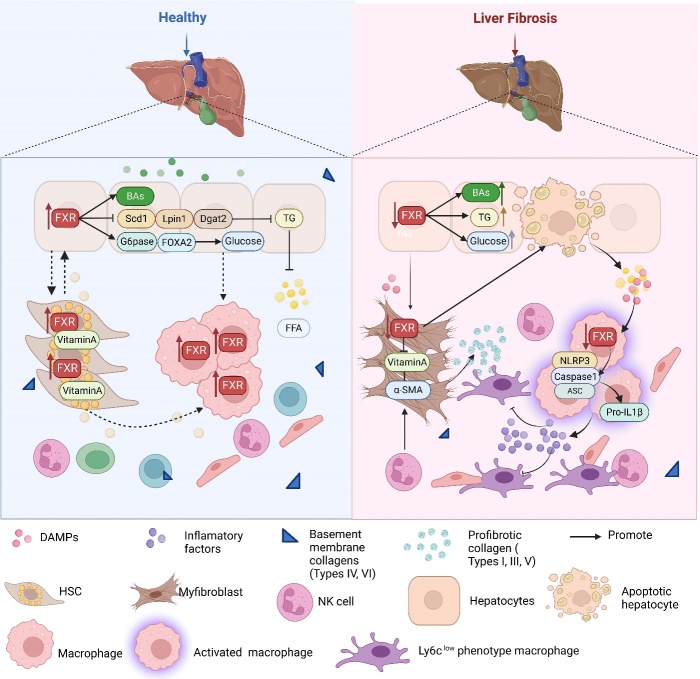Figure 8.
Summary of the role of FXR in key cells in liver fibrosis. In the normal liver, hepatocytes provide energy and nutrients to nonparenchymal cells. Vitamin A stored in HSCs promotes the growth and proliferation of hepatocytes and macrophages, effectively maintaining homeostasis in the liver microenvironment. After liver injury, FXR was decreased significantly, accompanied by apoptosis of hepatocytes as well as the release of increased DAMPs and FFA content, resulting in macrophage activation. During this process, HSCs lose the storage function of vitamin A and contribute to the deposition of ECM, leading to liver fibrosis.

